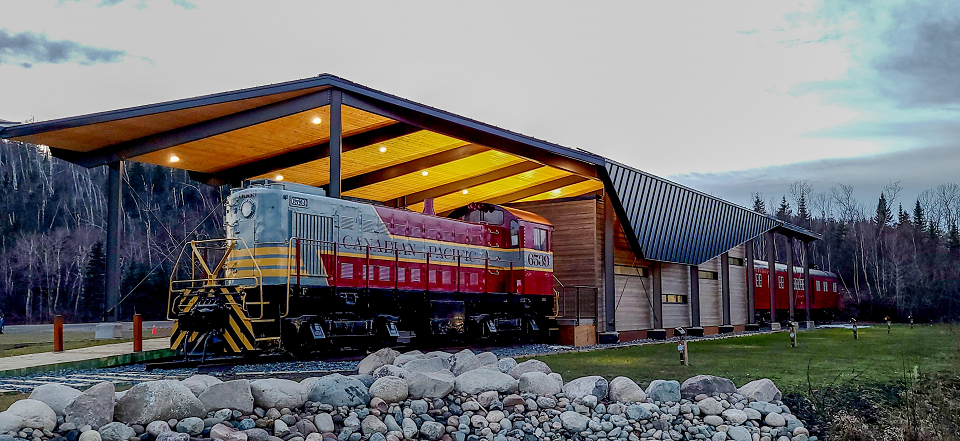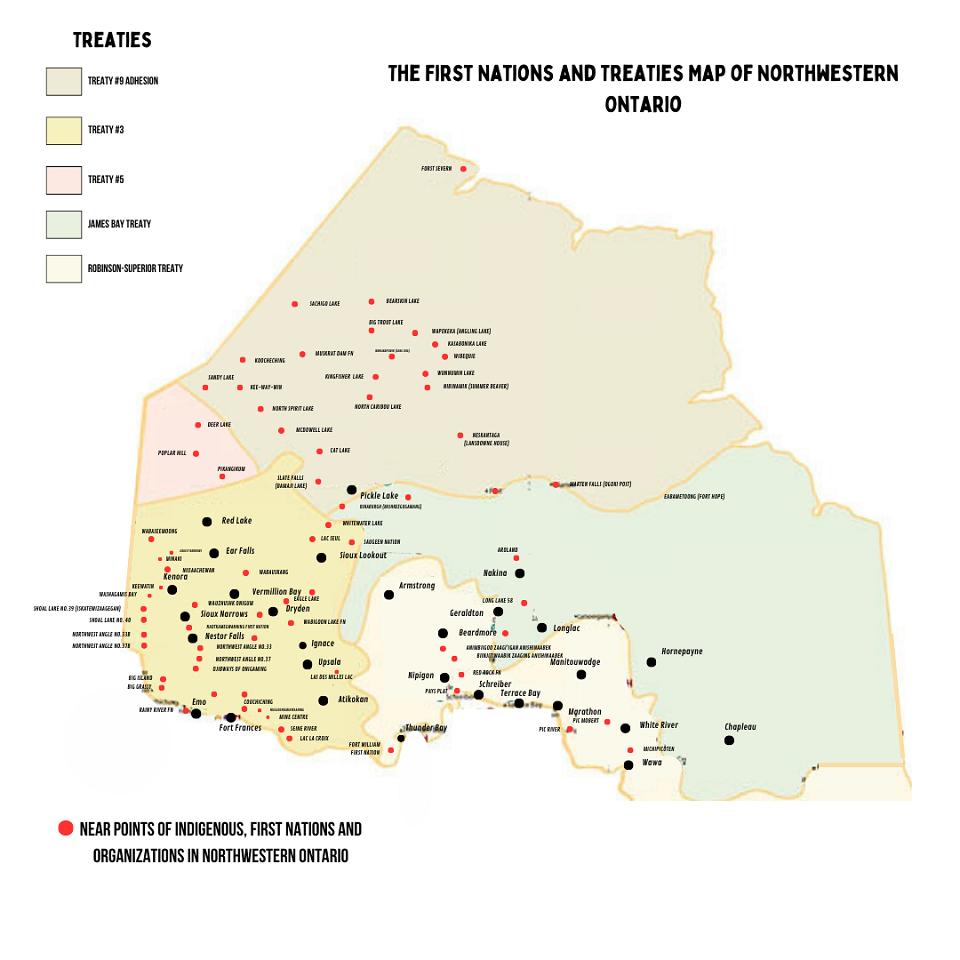
Northwestern Ontario: A Journey to the Past

Figure 1 (Schreiber Discovery Centre) (Photo Credit: Schreiber)
History is a complex understanding of the past, the discovery of origins, and the comprehension of ancestors. Northwestern Ontario, an enigmatic land nestled in the geographic heart of Canada, has consistently shaped the intricate tapestry of Canadian history. Within its borders lie tales of unyielding resilience and profound contributions that have profoundly impacted the nation's political and economic growth. Its diverse topography, awe-inspiring scenery, and unique climate offer a vivid backdrop for the stories that unfold here. Moreover, this land serves as a treasure trove of natural resources, matched only by the warmth and spirit of its inhabitants who have infused the region with a distinct and welcoming character.
The land of Northwestern Ontario bears the indelible imprints of its Indigenous ancestors, whose presence and heritage have shaped its very essence. The district divisions, each possessing a unique character, seamlessly blend into a captivating mosaic that defines this expansive region. The Indigenous peoples, the original stewards of this land, exhibited a deep connection to their environment. Despite plentiful harvests that sustained their lives, these communities maintained their migratory ways. Their journey was not without challenges, for nature's rhythms sometimes presented hardships that impeded their ability to secure sustenance. As the centuries unfolded, these Indigenous communities evolved into the First Peoples, their cultural essence interwoven with the Northwestern Ontario terrain. The First Peoples, spread across the Northern Ontario landscape, interweaving their cultures with the very fabric of the land and waters that sustained them for generations. Rooted in self-sufficiency, Indigenous communities flourished by drawing sustenance from the land, harbouring a deep reverence for the environment that sustained them. One of the First people, the Ojibwe tribe, who spanned the territories along the north shore of the Great Lakes from Georgian Bay to Lake Superior and beyond, exemplified this symbiotic relationship.
This captivating history begins with the initial footsteps of explorers in 1492 and the subsequent interactions between Indigenous communities and European newcomers. As these encounters unfolded, they laid the groundwork for a transformative new chapter in the evolution of what would eventually become Northern Ontario. The North's exploration was further ignited by the fur trade, a pioneering force driven by the quest for valuable pelts and the elusive western sea route. Through time, Northwestern Ontario's narrative has unfolded, a story woven by the threads of Indigenous heritage, exploration, and resourcefulness. It is a tale of resilience and adaptation, where history, culture, and nature converge to create a region that stands as a testament to the North's enduring allure and ongoing evolution.
Amidst the natural beauty and historical depth of Northwestern Ontario, a mosaic of cultures, histories, and transformations unfolds. As large numbers of non-indigenous settlers arrived in the latter part of the 19th century, the region witnessed a rapid evolution that would shape its destiny. The period from 1889 to 1918 brought about an industrial boom fuelled by the region's abundant timber, which not only contributed to the growth of central Canada but also fuelled the drive for settlement in Northwestern Ontario. Renowned for being a pivotal hub of trade and transportation, the allure of Northwestern Ontario is amplified by its abundant wildlife, a timeless attraction that has captivated generations of visitors. Despite the absence of a formal political identity, the region serves as a vital bridge uniting the eastern and western extents of the country.
The region is composed of three districts Thunder Bay, Rainy River, and Kenora District. Together, these districts form Northwestern Ontario, the largest region in Ontario. Situated in the northern part of the region, the Kenora District, the largest area of Northwestern Ontario, provides a tangible connection to the land's history. The Rainy River District, abutting the river and lake that bears its name, stands as a testament to the synergy between the region's waterways and its Indigenous communities. Meanwhile, the Thunder Bay District, with its rich history and strategic positioning, continues to bear witness to the interplay between human presence and natural forces. Thunder Bay's embrace within the "nor ‘wester" mountain range is a prime example of how geography intertwined with history, as the city blossomed in this natural cradle. The farms west of the city stand as steadfast contributors to the district's sustenance, while Highway 17 towards Dryden reveals yet another facet of the dynamic interplay between the land and its inhabitants. Transportation barriers were surmounted, ushering in an era of increased interest and development in the region.
Through the centuries, Northwestern Ontario has undergone a series of transformations, each phase leaving an indelible mark on its landscape and identity. From its origins as a fur-exchange highway to its embrace of rail and road development, from the times of lumbering and mineral discovery to its contemporary socioeconomic advancements, the region has demonstrated an inherent ability to adapt and endure. An enduring truth that has emerged is the importance of community cohesion and resource mobilization, particularly in the smaller rural towns that dot the region's expanse. In reflection, Northwestern Ontario stands as a testament to the profound intersections between nature, culture, and progress. From its earliest days, when Indigenous peoples thrived on its bounty, to the era of European contact and subsequent transformations, this land has resonated with change. Today, it is a region marked by its economic, geographical, and social distinctiveness from the southern reaches of the province. Its history is a patchwork of narratives, each thread contributing to a vibrant tapestry that echoes with the footprints of generations past and present.

Here is an Ontario Official First Nation and Treaties Map.
Here is the link for to a website that gives more detailed information of First Nation Communities in Ontario http://firstnation.ca/detailedmap
Resources used:
Brief History of Northern Ontario – Republic of Mining
Beaulieu, M. S., & Southcott, C. (2010). North of Superior: An Illustrated History of Northwestern Ontario. James Lorimer & Company.
Dickason, Olive Patricia. Canada's First Nations: A History of Founding Peoples from Earliest Times, Don Mills:Oxford University Press, 2002
Bishop, C. A., & Smith, M. E. (1975). Early Historic Populations in Northwestern Ontario: Archaeological and Ethnohistorical Interpretations. American Antiquity, 40(1), 54–63. https://doi.org/10.2307/279268


